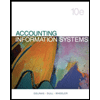Below are several statements about internal controls.1. The components of internal control are built on the foundation of the ethical tone set by top management.2. Once every three months, managers need to review operations to ensure that control procedures work effectively.3. Collusion refers to the act of a single individual circumventing internal control procedures.4. Detective control procedures are designed to detect errors or fraud that have already occurred, while preventive control procedures are designed to keep errors or fraud from occurring in the first place.5. Fraud committed by top-level employees is more difficult to detect because those employees more often have the ability to override internal control features.6. A good example of separation of duties would be having one person collect cash from customers and account for it, while having another person order inventory and maintain control over it.7. Employee tips historically have been the most common means of detecting employee fraud.8. Detective controls include reconciling the physical assets of the company with the accounting records and comparing actual performance of individuals or processes against their expected performance.9. Effective internal controls and ethical employees ensure a company’s success.Required:State whether the answer to each of the statements is true or false.
Below are several statements about internal controls.
1. The components of internal control are built on the foundation of the ethical tone set by top management.
2. Once every three months, managers need to review operations to ensure that control procedures work effectively.
3. Collusion refers to the act of a single individual circumventing internal control procedures.
4. Detective control procedures are designed to detect errors or fraud that have already occurred, while preventive control procedures are designed to keep errors or fraud from occurring in the first place.
5. Fraud committed by top-level employees is more difficult to detect because those employees more often have the ability to override internal control features.
6. A good example of separation of duties would be having one person collect cash from customers and account for it, while having another person order inventory and maintain control over it.
7. Employee tips historically have been the most common means of detecting employee fraud.
8. Detective controls include reconciling the physical assets of the company with the accounting records and comparing actual performance of individuals or processes against their expected performance.
9. Effective internal controls and ethical employees ensure a company’s success.
Required:
State whether the answer to each of the statements is true or false.
Trending now
This is a popular solution!
Step by step
Solved in 2 steps with 2 images







